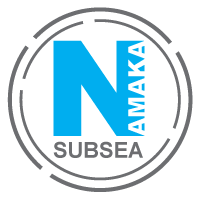Dive Support Vessel Reactivation

Overview
After two years of warm stack, Namaka Subsea assisted a client with the reactivation of their recently purchased Dive Support Vessel (DSV) in the Middle East by initially carrying out the IMCA DESIGN audits of the saturation and surface orientated diving systems onboard. Following the DESIGN audits, a review and update of the diving system Failure Modes Effects and Criticality Analysis (FMECA) assessments for both diving systems and the development of the vessel/system specific operating and emergency procedures were also completed.
Issues
During the auditing process, several points were brought to the clients' attention, such as a requirement to have vessel/system specific operating and emergency procedures available to assist the system operators, relevant not only to the equipment but also to ensure compliance with the clients' standard operating procedures. Due to the levels of automated control systems within the saturation diving system, we highlighted a requirement for an automation management system to be implemented in line with IEC 61508. Furthermore, due to various operational restrictions, the client could not carry out mating trials during the reactivation phase between their Self-Propelled Hyperbaric Lifeboat (SPHL) and the nominated Portable Hyperbaric Reception Facility (PHRF). This was a primary concern as the interface between the SPHL and PHRF could not be thoroughly tested before the vessel sailed to the location of the PHRF for a full mating trial.
Solution
After the findings were raised with the client, Namaka was tasked with developing and implementing all operating and emergency procedures for their diving systems. This process involved taking the original equipment manufacturers' operating manuals, reviewed FMECA and client procedures, and develop procedures, emphasising the normal and emergency operation of the lifesaving and safety-critical equipment. After completing the operating and emergency procedures, we then moved on to create and implement the automation management system. This process involved reviewing all original equipment manufacturer operating manuals, company procedures and global standards for automated control systems, then create a company life-cycle policy complete with supporting procedures and registers. Once all this data was collated and reviewed, it was compiled into a single policy document for future guidance of how the client manages their automated control systems. The final part of the scope of work required, one of our engineers to carry out an engineering compatibility study between the clients SPHL and PHRF based on the requirements of IMCA D 051 Hyperbaric evacuation systems (HES) interface recommendations. This process began by completing a review of the technical drawings and calculations for both the SPHL and PHRF to ensure compatibility. These were analysed to confirmed that both were designed and engineered as per IMCA D051 requirements and all components assessed one by one, analysing and comparing data provided.
In Summary
Namaka Subsea provided a team of highly skilled and competent personnel to assist the client with the reactivation of their DSV, ensuring that on completion of the scope of work, the diving systems adhered to industry best practice and guidance. During the scope of work, the client was very supportive and accommodating, with their technical and operational support personnel happy to supply the relevant information when required
Looking for Dive Vessel Support?
get in touch and find out how we can help
